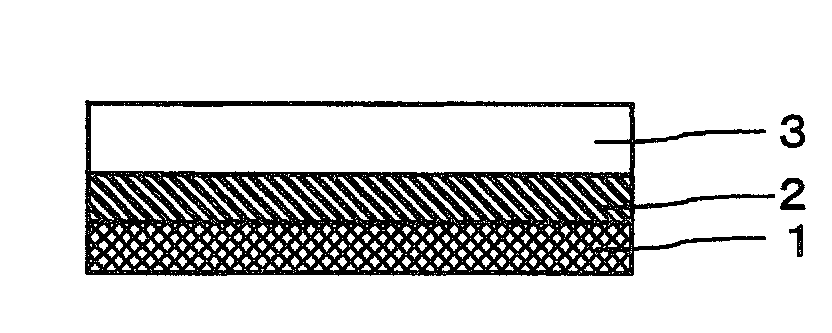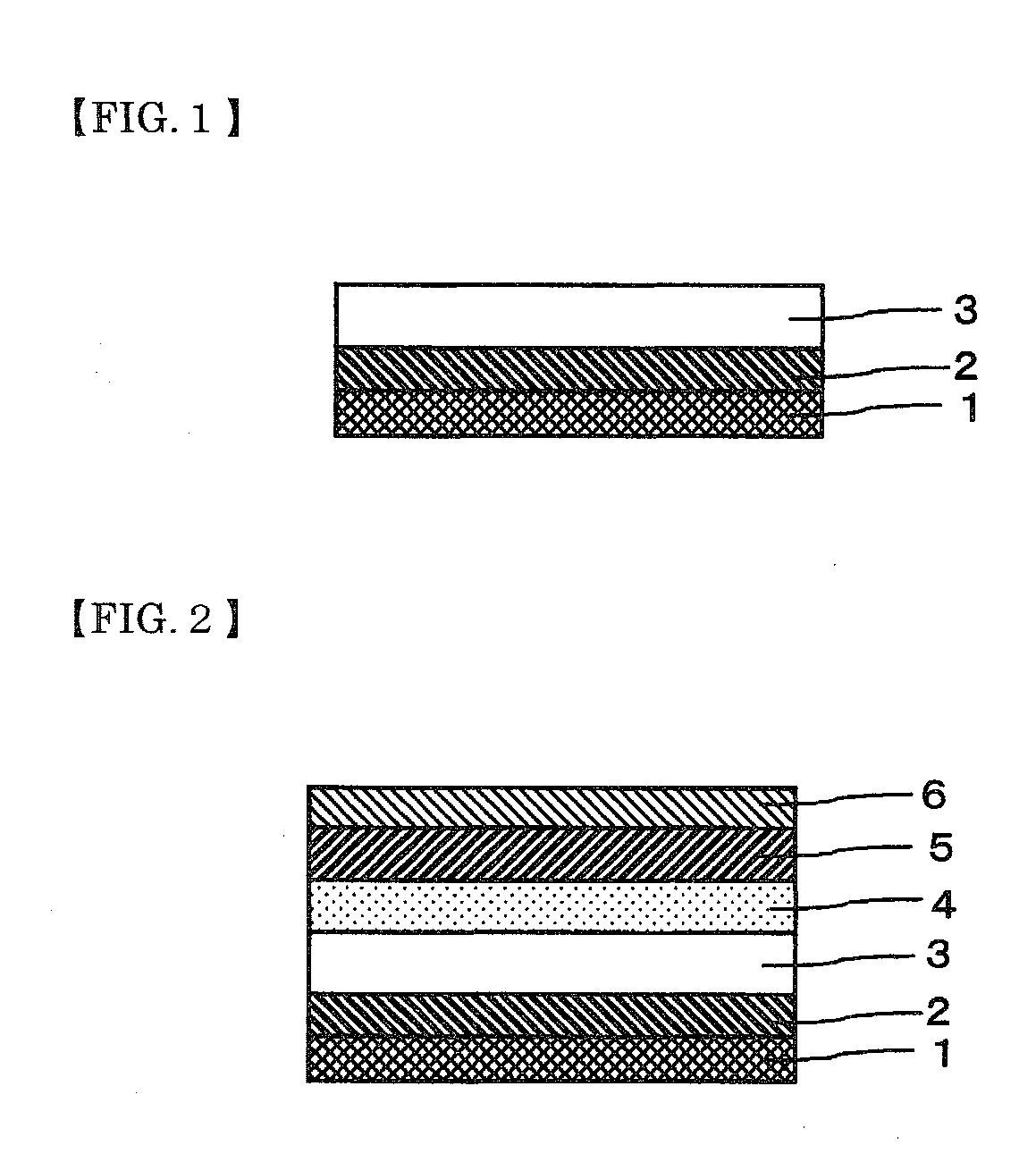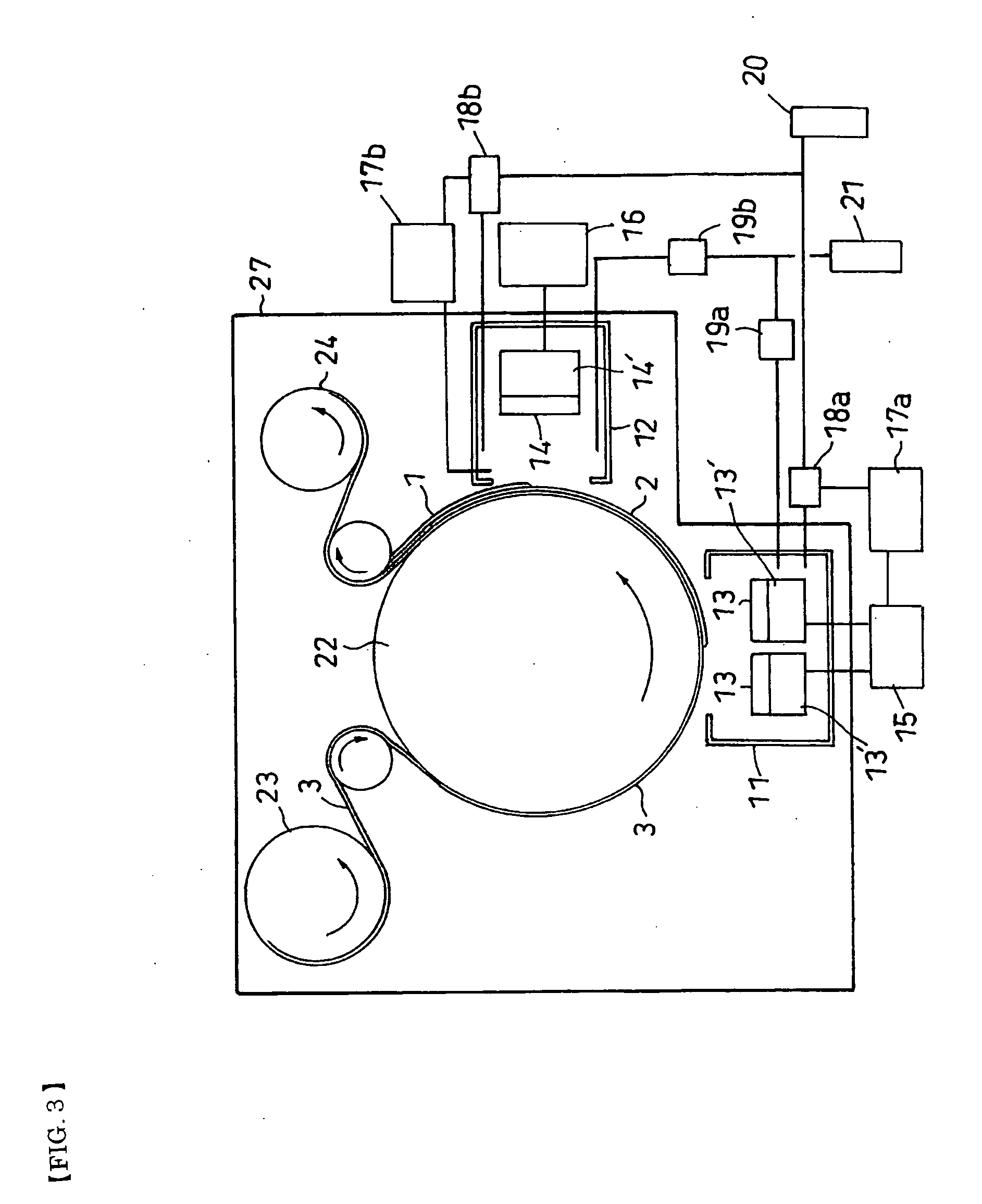Transparent conductive film and method for producing the same
- Summary
- Abstract
- Description
- Claims
- Application Information
AI Technical Summary
Benefits of technology
Problems solved by technology
Method used
Image
Examples
examples
[0078]The invention is described below with reference to some examples which are not intended to limit the scope of the invention.
[0079]The invention is more specifically described by showing the examples below which are not intended to limit the scope of the invention.
examples 1
Organic Polymer Film Substrate
[0080]The organic polymer film substrate used was a polyethylene terephthalate (PET) film 0300E (100 μm in thickness) manufactured by Mitsubishi Plastics Inc.
Pretreatment
[0081]The PET film was placed in a sputter deposition device as shown in FIG. 3 such that an Al2O3 thin film was able to be formed on its smooth surface (not undergoing smoothing treatment) of the PET film. The roller electrode used was heated to 120° C. While the film was wound, degassing was performed with an evacuation device including a cryocoil and a turbopump so that an ultimate vacuum of 1.5×10−6 Pa was achieved. Argon gas was then introduced, and the film was allowed to pass through plasma discharge at 13.56 MHz so that the PET surface was pretreated.
Formation of Al2O3 Thin Film
Undercoat Layer
[0082]Al as a target was then mounted on each electrode of the dual magnetron sputtering device of FIG. 3. While argon gas was introduced at 150 sccm (air-equivalent gas flow rate, cc / minut...
example 2
[0084]A transparent conductive film was obtained in the same manner as in example 1, except that the GZO thin film was formed by the method described below.
Formation of GZO Thin Film
[0085]The target for producing the GZO thin film was replaced with ZnO-5.7% by weight Ga2O3 (ZnO—Ga2O3 with a Ga2O3 content of 5.7% by weight) as an oxide target, and the film was formed under only argon gas with a DC power of 3 kw. The amount of the introduction of the argon gas was 300 sccm, and the film was produced under a pressure of 0.3 Pa. The GZO thin film had a thickness of about 40 nm.
PUM
| Property | Measurement | Unit |
|---|---|---|
| Temperature | aaaaa | aaaaa |
| Thickness | aaaaa | aaaaa |
| Pressure | aaaaa | aaaaa |
Abstract
Description
Claims
Application Information
 Login to View More
Login to View More - R&D
- Intellectual Property
- Life Sciences
- Materials
- Tech Scout
- Unparalleled Data Quality
- Higher Quality Content
- 60% Fewer Hallucinations
Browse by: Latest US Patents, China's latest patents, Technical Efficacy Thesaurus, Application Domain, Technology Topic, Popular Technical Reports.
© 2025 PatSnap. All rights reserved.Legal|Privacy policy|Modern Slavery Act Transparency Statement|Sitemap|About US| Contact US: help@patsnap.com



